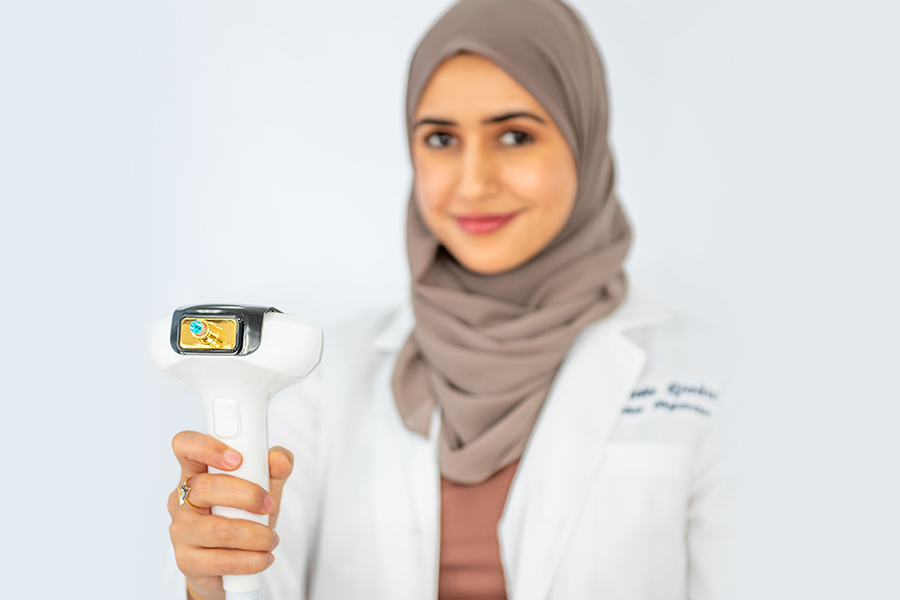What Our Patients Say
About Our Dry Eye Service
Synoptic Eye Care has the newest and latest technology when it comes to treating your dry eye!

INMODE Forma I Radiofrequency treatment (RF)
INMODE Forma Radiofrequency treatment (RF) uses Radio-Frequency energy to generate heat the oil glands that line the eyelids. This heat stimulates collagen formation and recruits white blood cells and stem cells to the area to reduce the inflammation causing the dry eye. This treatment also helps unclog the openings of the meibomian glands which allows for improved tear production and secretion.
In our office, RF is immediately followed by manual glad expression to enhance the function of the meibomian glands and allow more room for new oil production.
RF is an excellent treatment for chronic MGD because it’s the most effective way to heat the gland tissue and meibum before a manual gland expression. RF:
Safely heating meiboman glands for expressions
Tightens existing collagen at the dermal layer
Stimulates production of NEW collagen in the deeper dermis
INMODE Lumecca Intense Pulse Light treatment (IPL)
INMODE Lumecca Intense Pulse Light treatment (IPL) works by controlling the inflammatory process and stopping the vicious inflammatory cycle. IPL treats ocular rosacea, Meibomian Gland Dysfunction, and Inflammatory dry eye. The powerful bursts of light energy have been shown to decrease demodex and bacteria around the eyelids.
IPL is effective because it is absorbed by chromatophores that leak from the abnormal vessels in rosacea. The absorption descructs the abnormal vessels and in turn inhibits the influx of inflammatory cells. The bursts of light energy are powerful enough to kill the Demodex mites that cause chronic eyelid inflammation and reduces the over-active epithelial cells on the eyelid margin.
IPL and RP will directly heat the meibomian glands to about 42 degrees Celcius which liquifies the “solidified” meibum. The combination of IPL, RF and manual gland expression allows for maximum benefit and therapy for our patients.
IPL and RF also reverse the signs of aging by stimulating collagen production, smoothing wrinkles, and eliminating dark spots for younger looking eyes.
Before & After Pictures
What role do eyelids play in dry eye?
The eyelids are critical for producing the oily layer of the tear film and antibodies for protection. The oily layer is produced by the meibomian glands which line our upped and lower lids. The lower lids produce most of the tear film and the top lid acts as a “windshield wiper” that spreads the oil evenly across the surface of the eye. The hyaluronic acid in the tear film absorbs oxygen directly from the air and feeds it to the cornea. Any abnormality of the tear film (too much water or too much acidity) will cause low oxygen levels in the cornea and create other problems.
Another important function of the tear film is protection of the eyeball from bacteria and viruses. If the meibomian glands are not functioning well, the eye is at a greater risk of infection. The eyelash follicles can be infected with bacteria or Demodex (live microscopic worms). These worms are very common as we age, with approximately 80% of 65 year old showing infestation with Demodex. Patients with this parasite will develop a chronic infection of the eyelashes called blepharitis.
There are many conditions that can damage or inhibit the function of the critical meibomian glands:
Rosacea
Autoimmune Diseases (arthritis, lupus, MS, proriasis, etc.)
Medications
Refractive surgery (LASIK, PRK)
Radiation therapy
Sjorgen’s syndrome
Lagophthalmos (incomplete closure of the eyelids)
To learn more about your dry eye and explore the best treatment option for you, call our office at (954) 999-5592 and schedule a consultation.










